Short Guide to Italian Republican
Coins
Second issue (1951- 2002)
Please note: all pictures
are scanned larger than actual size to better show details.
All the following
coins are still legal tender although the 1 and 2 lire are not minted
for circulation since 1959, silver 500 lire since 1967 and the 5
lire since 1997. You still can find these coins in the mint Unc. and proof
sets.The 10 and 20 Lire coins, are still struck for circulation in a limited
quantity, but you can find them in coin shops only, since I haven't
seen them in my change for at least the
past 8-10 years.
Update: the 50 and 100 lire micro coins KM 95a and KM
96a, are no longer legal tender since October 16, 2000.
1 Lira (km# 91):
2 Lire (km#94):
5 Lire (Km# 92):
10 Lire (Km# 93):
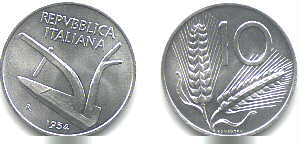
All the above coins are struck in Italma (see above for
the alloy composition).
20 Lire (Km# 97):
50 Lire (Km# 95):
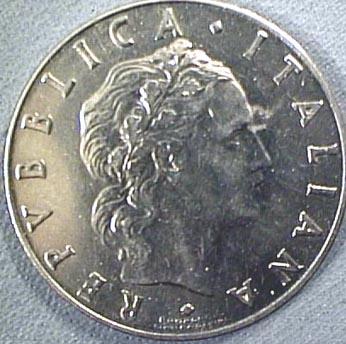
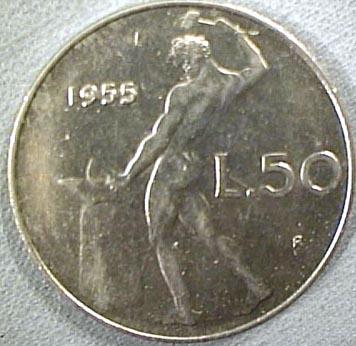
50 Lire (Km#95a):
50 Lire (Km# 183):
100 Lire (Km# 96):
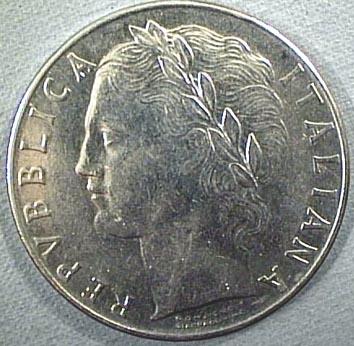

100 Lire (Km# 96a):
100 Lire (km# 159):
200 Lire (km# 105):

500 Lire Silver (Km# 98):
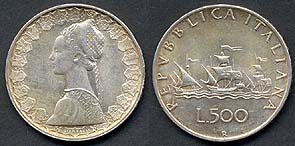
500 Lire (Km# 111):
This is a most peculiar coin. As far as I know, this is the world's first modern bimetallic coin (1982) and the only coin in the world that has the value written in braille (see the raised dots on the top of rev.).
obv. allegorical portrait of Italian Republic with wings
springing out of the head as a symbol of freedom and intelligence.
rev. Quirinale palace in Roma. The
Quirinale was the Popes' palace until 1870 when Rome
was conquered by Vittorio Emanuele II, the first king of
re-unified Italy. Since then it has been the Italian kings'residence
and now it is the President of the Republic's palace (as sort of Italian
White House). On the left of the picture, you can
see a fountain with one of the many egyptian obelisks brought by the Romans
to Rome. On the sides of the obelisk, you can see
the statues of the two Dioscuri (Castor and Pollux),
twin deities sons of Zeus who soccoured shipwrecked
sailors and received sacrifice for favourable winds. Their cult was introduced
in Rome in the 5th century b.c. According to
legend, they fought aside of the Romans in the battle
of Lake Regillus an carried the news of victory to Rome. Their image appeared
on the early Roman republican silver denarius, represented
as horsemen holding spears and wearing helmets.

1000 Lire (Km# 190 and 194):

(km# 190 wrong map of Europe)
(km # 194 correct map of Europe)
obv. allegorical portrait
rev. Europe unveiled. As you probably know, there are
two versions of the map of Europe. The first
one is not very precise and shows Germany with pre-1989
boundaries. The second shows the correct map of Europe.
Both are dated 1997, while since 1998 only coins with the correct map are
minted. The wrong map coin is no rarity, since millions of coins were minted
before the mistake was put to the public attention and the mint was forced
to a new picture.